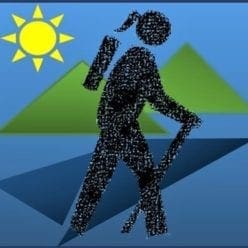Most recently updated January 18th, 2022
The Triple Crown trail loop is 35 miles of the best hiking in the Roanoke Valley and arguably some of the best overlooks in the entire state of Virginia.
Most of my time was spent hiking, but since I did two of the three Triple Crown hikes in the same day, I also had time to take a break from hiking and see some other things in the area.

At that time, many venues were completely shut down or really restricted due to COVID regulations, but Beliveau Farm and Winery was open (though with safety measures) and I was still able to have a great visit!
Beliveau Farm is located in the Catawba Valley of Virginia’s Blue Ridge Mountains, just 12mi from downtown Blacksburg and 20mi from Salem.
They were also only a 30 minute scenic drive from my lodgings near the McAfee Knob trailhead.
The Farm’s hiking trails, scenic views and plenty of picnic areas made the drive well worth while – and the wine was pretty good, too 🙂
Some of my posts contain affiliate links. If you make a purchase through an affiliate link, I will receive a small payment at no additional cost to you. As an Amazon Associate, and other marketing affiliations, I earn from qualifying purchases. See full Disclosure page here.
The scenic 165 acre property is home to Beliveau Farm Winery, Beliveau Farm Brewery, The Manor House Bed and Breakfast, and an Italian tiled event building. (Weddings are a signature event at the rustic yet elegant farm property.)

There are lots of open outdoor running areas and rocks to climb, too, so Beliveau Farm is a great place to visit with your children.

A family friendly area with tables, chairs, and sandboxes also beckon the youngest of visitors.
Well behaved dogs on leashes are always welcome, too. (outside only)
I did a tasting at the outdoor bar, then sat in a gazebo overlooking a lavender field, sipping a glass of white wine and nibbling a chicken lavender sandwich from their kitchen.
Afterwards, I took a walk around to check out the rest of the place.
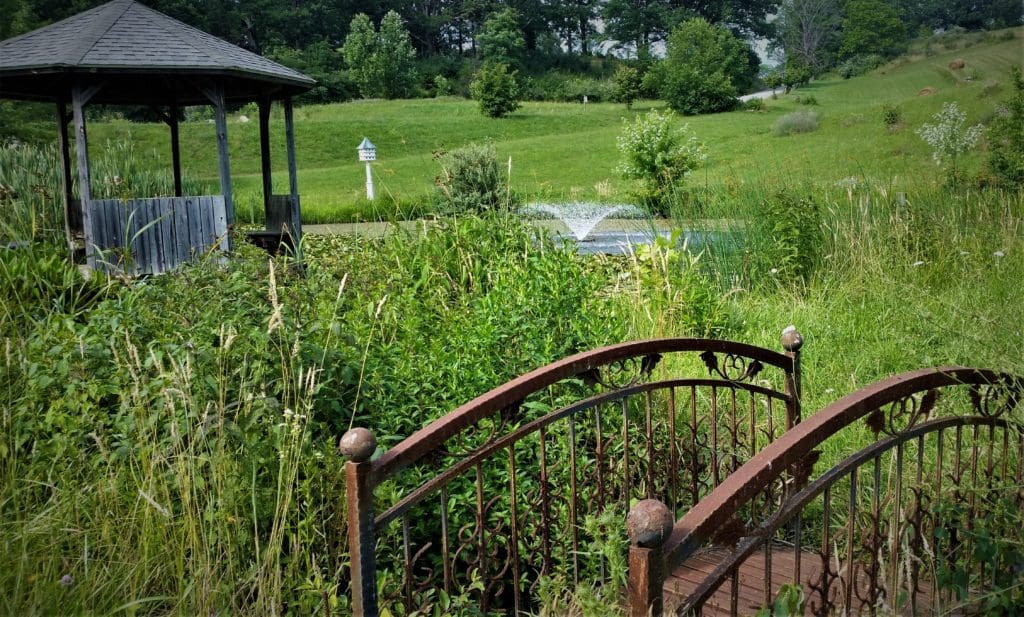
After my walkabout, I took another glass of wine back to the gazebo, where I was lucky enough to find the owners, Joyce and Yvan – also relaxing with some wine.
We talked a little bit about their farm, how it started, and their hopes for the future.
About Beliveau Farm and Winery
It started with a dream to make wine.
Yvan, a builder, an academic, and a farm boy at heart, wanted to grow grapes and blend the art and science of making wine; Joyce had always had a passion for lavender.
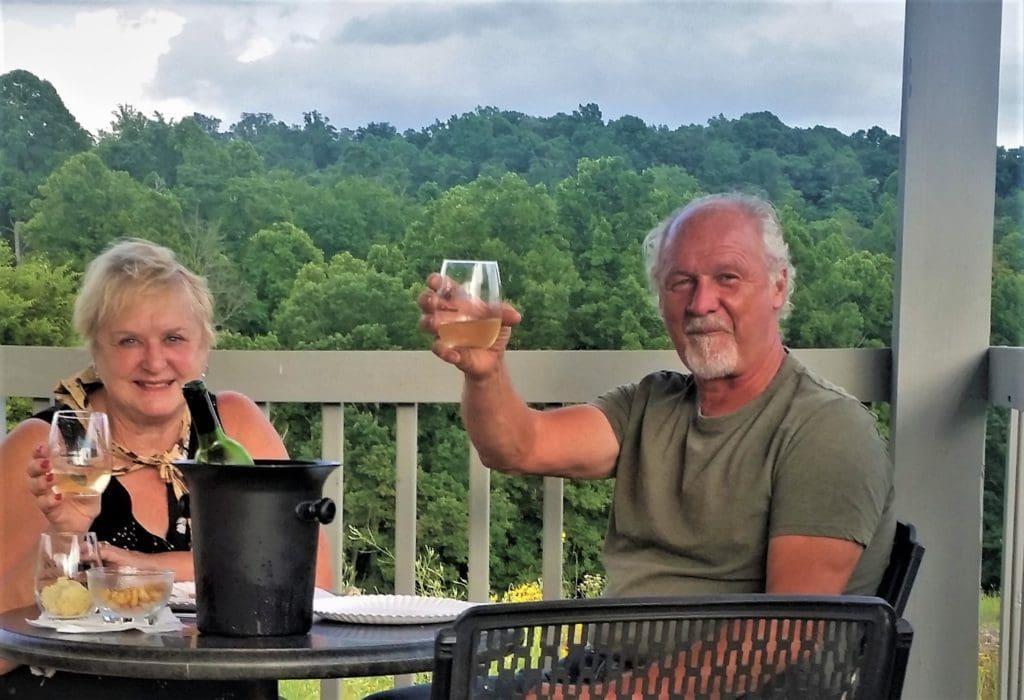
“We were lucky to happen upon this 165 acre property in 2001 and knew immediately it was where we wanted to live our dream of planting a vineyard and opening a winery, ” they said.
-
- The Beliveau Farm was purchased in 2001, the first grapes planted in 2009, the first wine produced in 2011 with the winery opening in May 2012.
- They first planted lavender on the farm in 2005. Since 2008 the public has enjoyed lavender season from mid-June through July.
- They opened their Bed and Breakfast in 2007 and held the first of many weddings in their newly constructed Event Building.
- A brewery was added in September 2019 offering both gluten free and gluten based varieties.
They’ve tried to be as self-sufficient as possible and use as much green technology as they could on the farm.
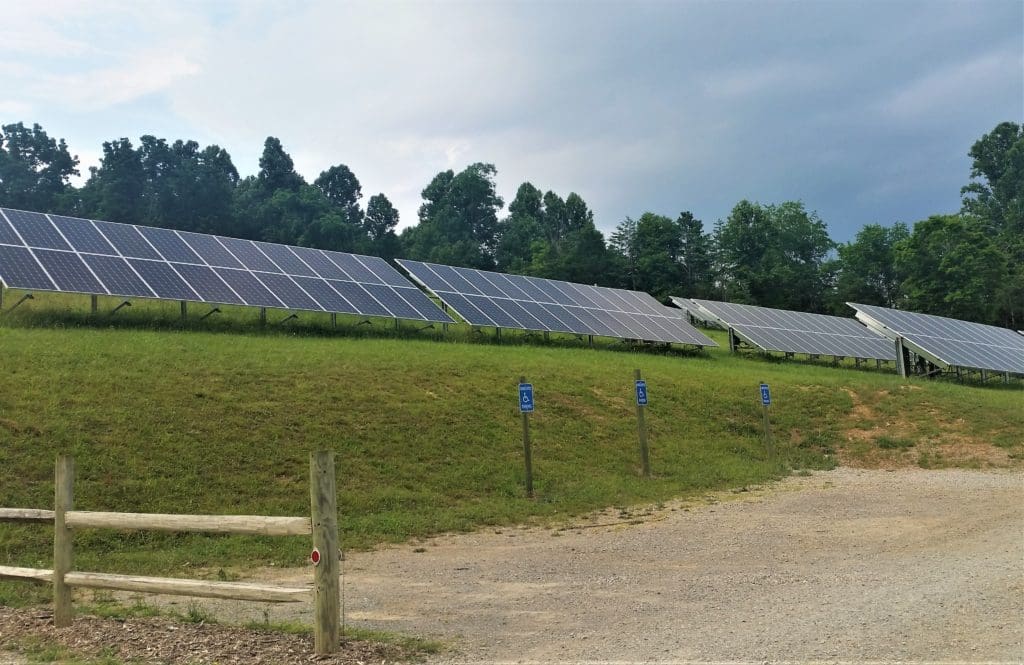
In fact, after only 6 months, the banks of solar panels they installed were powering the entire complex! Yvan said they only pay a small administrative fee and the sun does the rest 🙂
COVID closings and event cancellations were hard on the business, but they’ve been able to weather the storm and use the time to build toward the future.
Today, the original overgrown 165 acres and a 1900’s farmhouse used as a barn have been transformed by Yvan and Joyce’s hard work and imagination into the award-winning winery, brewery, bed and breakfast, and wedding/event venue called Beliveau Farm.
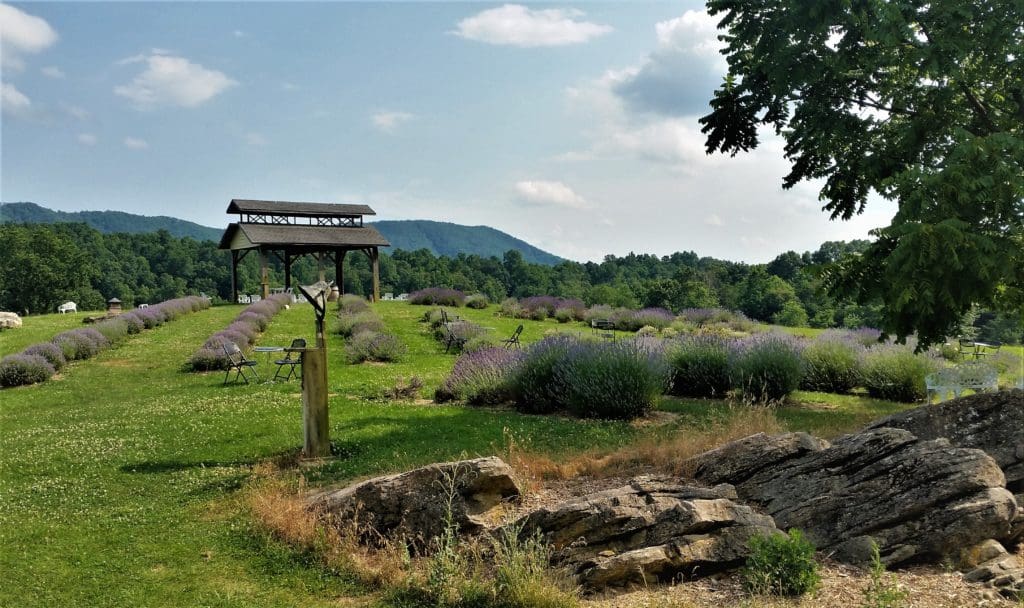
The Wines
Winemaker/Owner Yvan Beliveau has travelled the world trying wines wherever he went, leading him to explore the art of wine-making himself – starting with planting a vineyard!
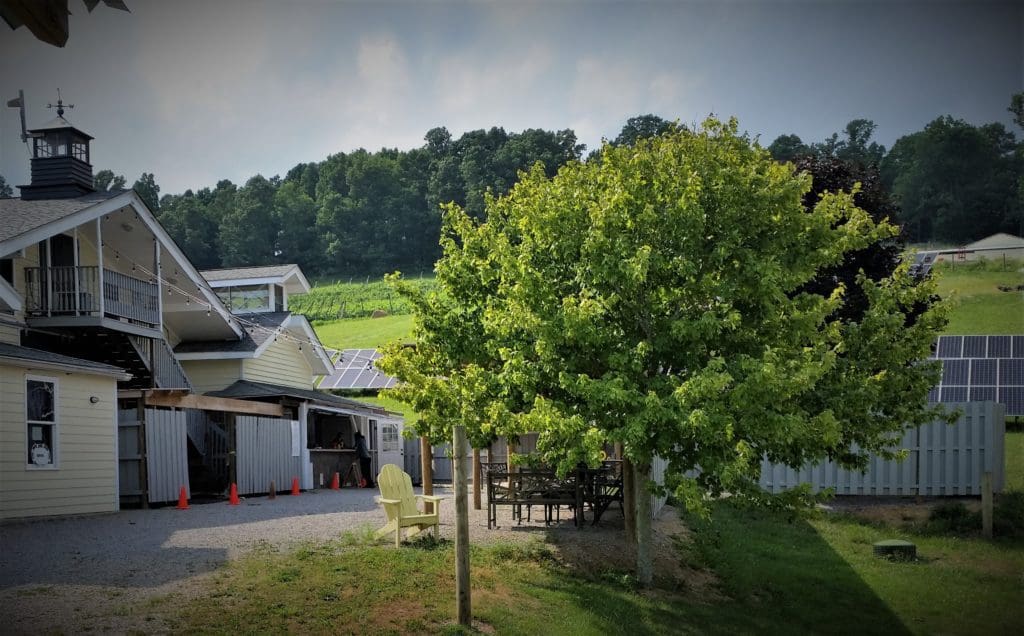
The farm has 12 acres planted in vines that grow the majority of grapes used in Beliveau wines, which are handcrafted, produced, and bottled on-site.
They had one simple goal for the Winery – to make great wine!
Beliveau wines have received more than 100 medals since the winery opened in 2012 – including GOLD in international and DOUBLE GOLD in regional competitions – sothat goal has been met and exceeded beyond all expectation!
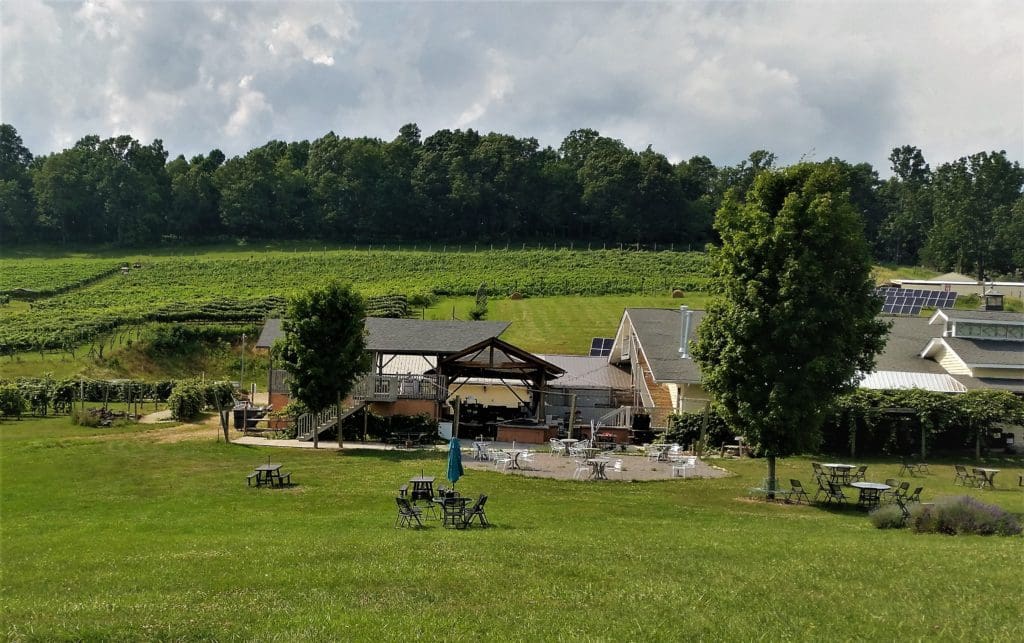
Award-winning Beliveau red and white wines in dry, semi-dry, semi-sweet, and sweet varieties are available on the Farm for tasting, by the glass, and by the bottle.
Friendly and knowledgeable staff will serve you any of the wines on the current list: WINES CURRENTLY AVAILABLE
You’ll have to taste them all and pick your favorite! 🙂
Current hours: Wednesday – Sunday, 12-6pm (Friday until 8pm).
Reservations are encouraged, as tables and chairs are plentiful but not without limit. Please Call 540-961-0505 to reserve. E-mails are not accepted for reservations.
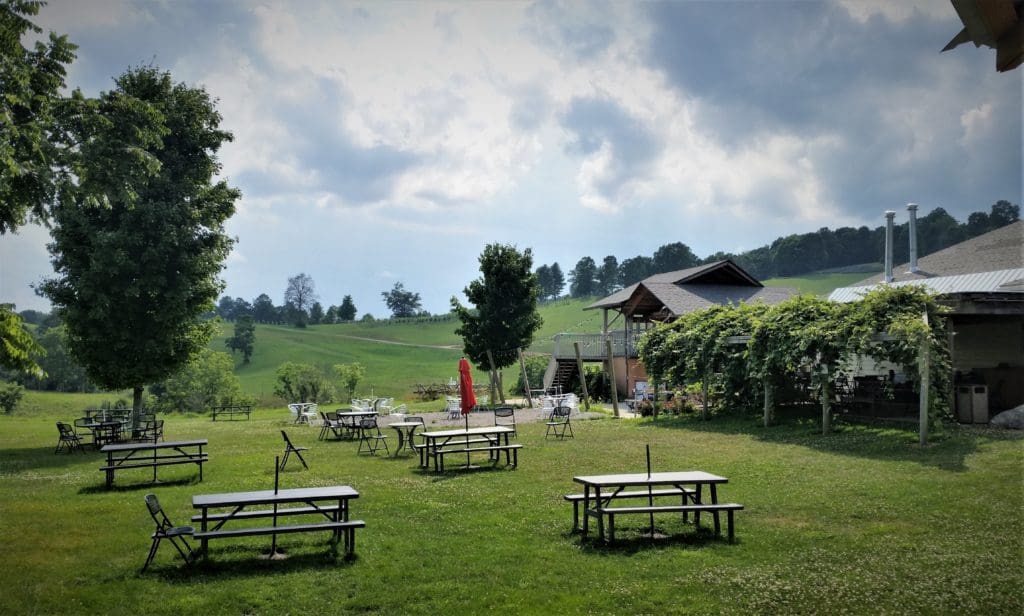
The Brewery
Beliveau Brewery opened in September 2019 and currently stands as Virginia’s only Gluten-Free brewery.
As someone with a gluten sensitivity, Yvan is excited to be able to drink delicious beer again.
House brewer John Hildreth helped make that possible by brewing gluten free beer, full of flavor and character, harnessing the power of ancient grains.
“I didn’t simply want to brew a ‘good enough’ beer for those who couldn’t have the barley malt variety,” John said.
Beliveau beers are made from malted rice, millet and buckwheat, and the brewery is a completely Gluten Free facility.

The brewery produces solely gluten-free so the brewing equipment is never compromised by contact with gluten.
In addition to Beliveau brews, the tap lineup also includes contract brews from Parkway Brewing in Salem, VA.
Recent brews available have included: Blonde, IPA, Maple Ale, English Bitter, and Oatmeal Stout.
Beer is available by the glass, or growler for take home (feel free to bring your own to fill). Come check out the seasonal rotating taps as you relax and enjoy the beautiful scenery.
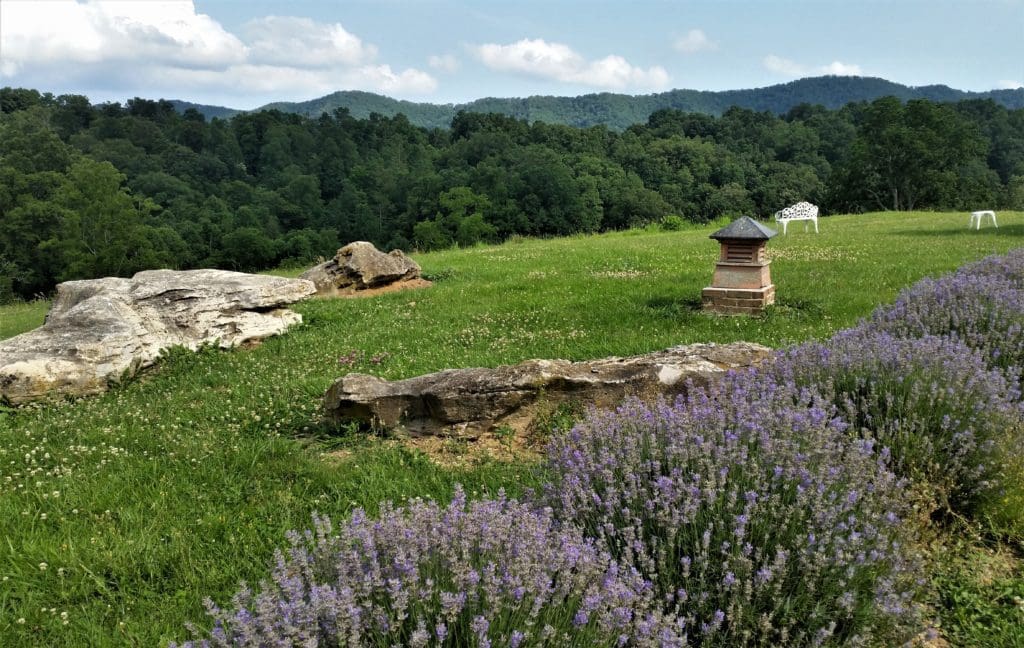
Local History
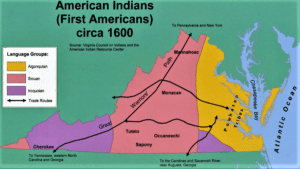
The site of present day Blacksburg (12 miles from the winery) was home to the Siouan-speaking tribes – Monacan and Moneton – before it was colonized by the English from 1671.
The town we know today as Blacksburg, VA was first settled in 1748 as Draper’s Meadows, then became Smithfield in 1773, and was finally officially established as Blacksburg in 1798.
WARNING: We are heading into Historyville for a while. If you’re not interested in the historical details of the area – with bloody battles, weddings, and tales of heroism! – you can use the menu links to skip ahead. 🙂
Draper’s Meadows
The frontier settlement of Draper’s Meadows was built on one of the earliest and best routes over the mountainous Allegheny ridge, just within the eastern boundary of the great Mississippi River basin.
William Preston surveyed the original settlement, creating 25 to 30 lots, most between 150-600 acres in size.
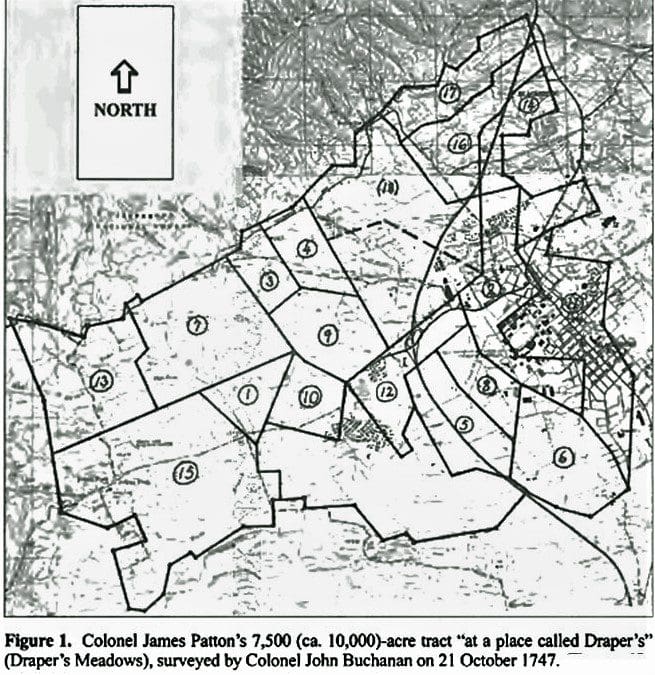
The original 7,500 acre tract, granted to Col. James Patterson, was bordered by Tom’s Creek on the north, Stroubles Creek on the south, and the Mississippi Watershed (modern-day U.S. Route 460) on the east. It approached the New River on the west.
The Draper and Ingles families were some of the first to settle in the area.
THE INGLES FAMILY:
Thomas Ingles was a Scot, though born and reared in London. By 1740 he was established as a large importing wholesale merchant in Dublin, Ireland. Ingles was wealthy, owned his own ship and traded with foreign countries.
Ingles was active in politics, and when his cause failed, his property was confiscated and he was lucky to escape Dublin with his life.
He came to America (after escaping political imprisonment in Wales) with his three sons – William, Matthew, and John – and settled for a time in Pennsylvania .
In 1744, Thomas Ingles and his eldest son William, then only a boy, made an excursion to the Wilds of Southwestern Virginia, going as far as New River.
It was likely this was when they first met the Draper family, living at Pattonsburg (on the James River ) in Boutetourt County, Virginia.
THE DRAPER FAMILY:
George Draper and his wife (maiden name Elinor Hardin) came from county Donegal, north Ireland, in 1720, and settled at the mouth of the Schmylkill River, within the city of Philadelphia.
Their two children were born there – John in 1730 and Mary in 1732.
About 1740 the family moved to Virginia and settled in Colonel Patton’s settlement, Pattonsburg.
Four years later, George Draper started out on a game-hunting and land expedition and was never heard of again.
SETTLING DRAPERS MEADOWS
In 1748, immediately after Dr. Thomas Walker and Col. James Patton’s expedition returned to Pattonsburg from SW Virginia, another expedition set out, including:
-
- Thomas Ingles and his three sons,
- Mrs. Draper and her son and daughter,
- Adam Harman, Henry Leonard and James Burke.
This group left Pattonsburg together, and became the original settlers west of the Allegheny divide in the place known as Draper’s Meadows.
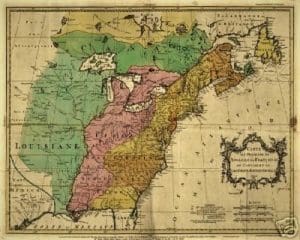
Very few facts are known about the Ingles-Draper frontier settlement.
We do know that just a couple of years after the move, in 1750, 21-yr old William Ingles (son of Thomas) and 18 yr-old Mary Draper (daughter of Elinor and George) were married.
This was said to be the first Colonial wedding west of the Alleghenies.
Soon thereafter their son, Thomas, became the first white child born west of the Alleghenies.
We also know that Draper’s Meadows is the source one of the most dramatic and inspirational captivity stories of all time:
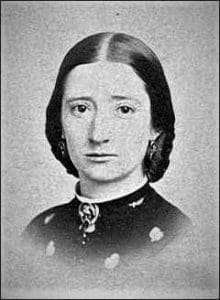
Mary Draper Ingles’ capture at the Draper’s Meadows Massacre, her daring escape, and her long walk home through the wilderness.
The Draper’s Meadows Massacre
At least as early as the spring of 1753, Indians had been seriously harassing settlers in the Virginia backcountry.
Unfortunately for Col. James Patton, who held the land tract that included Draper’s Meadows and many more unsettled acres in the area, the French and Indian War began in North America in 1754.
Colonel James Patton
Rising tensions between the natives and western settlers were exacerbated by the war – the Shawnee were aligned with the French – and recent victories by the French over the British had left much of the frontier unprotected.
At that time, as county lieutenant, Colonel James Patton was the highest ranking militia officer in Augusta County.
As such, Patton was forced to focus on protecting the frontier families who had settled there under his auspices, and spend less attention to his land development activities.
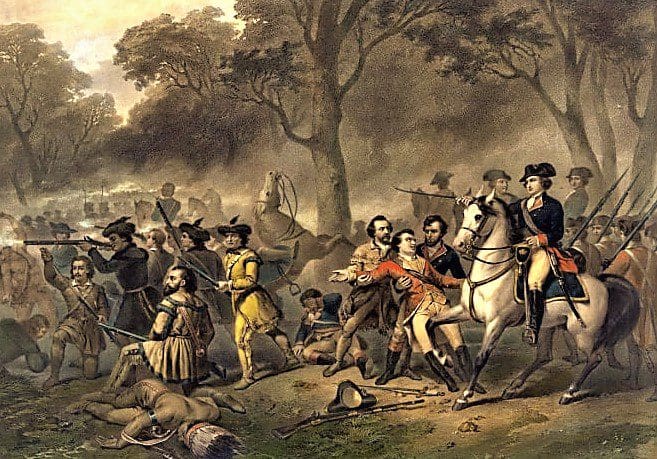
In January 1754, after hearing from George Washington that the French were determined to stay in the Ohio Valley, Governor Robert Dinwiddie instructed James Patton to “draw out the Militia of your county.”
So in late July 1755, Colonel Patton made a final journey to the Draper’s Meadows settlement.
He brought a convoy of militiamen (including Captain William Preston) and a supply of ammunition to protect the community against the Indians – who had already attacked some settlers on the New River earlier in the month.
For unknown reasons, Colonel Patton apparently visited the Draper and Ingles families alone at their home, without a guard.
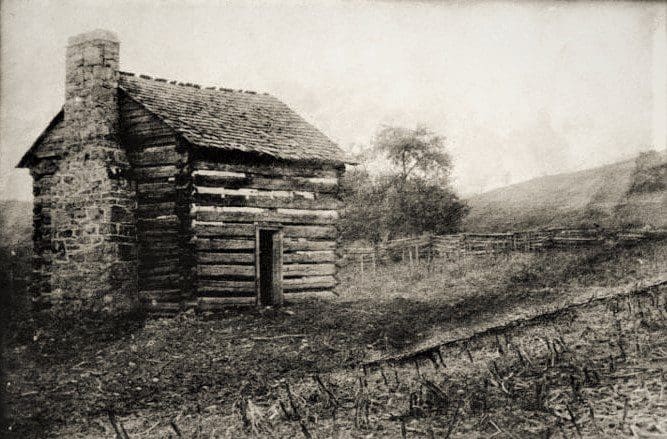
The Shawnee attack on Drapers Meadows on July 30, 1755 was a surprise.
THE ATTACK
The band of Shawnee Indians entered the undefended bottomlands, killed at least four people, and captured several more.
William Ingles and John Draper escaped because they had not been home at the time of the massacre.
Colonel James Patton was killed by Indians at William and Mary Ingles house during the massacre.
The other massacre victims known to have been killed were Eleanor Draper and her grandchild (the child of John and Bettie Draper) and Casper Barger.
The Draper’s Meadows Massacre was first reported publicly in the Virginia Gazette on 8 August 1755:
“By an Express this Morning from Augusta County, we have the
melancholy Account of the Murder of Col. James Patton, who was
killed by a Party of Indians, the last Day of July, on the Head Branches of Roanoke, and eight more Men, Women, and Children. Col. Patton was going out with Ammunition &c. for the Use of the Frontier Inhabitants, and stopping at a Plantation on the Road to refresh himself, the Convoy being about five Miles before, he was beset by 16 Indians, who killed, and stripped him, and then made off with his Horse &c.”
Strangely, there’s no record of where James Patton and the other people killed in the massacre were buried.
The graves may have been intentionally left unmarked in 1755 and their location kept secret to keep them from being vandalized, or the grave sites may have simply been forgotten.
We have no idea of their whereabouts today.
CAPTIVITY
Mary Draper Ingles and her two sons, Tommy (age 4), and George (age 2) were among the captives. Bettie Draper and a man named Henry Leonard were also taken.
The captives immediately began an intense forced march to the Shawnee’s home villages near present-day Chillicothe, Ohio.
To slow down or complain would have meant death for Mary and her children.
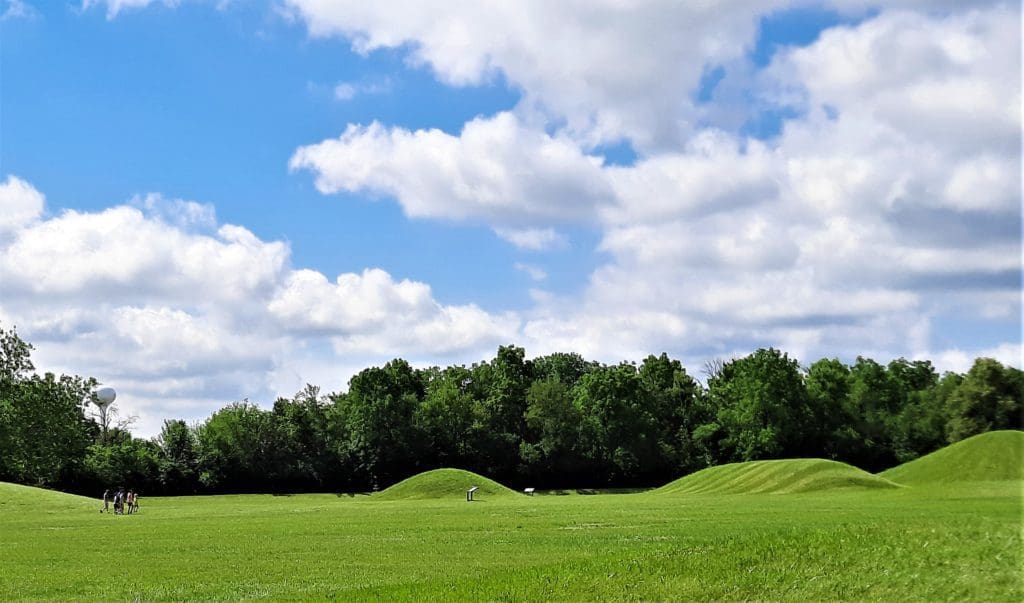
The party spent the month of August traveling along the Kanawha and Ohio River valleys, stopping at a village located on the Scioto River. While there, the prisoners were separated.
Mary was forced to part with her two sons, who were taken for adoption into the tribe. She was given in servitude to a French trader.
By September, Mary was taken down the Ohio River to Big Bone Lick in present-day Boone County, Kentucky, where the Shawnees gathered salt.
ESCAPE
By October, Mary and another captive – known from history only as the “old Dutch woman” – had planned an escape.
The two women made their escape into the rugged wilderness with only a simple plan to follow the rivers eastward to English settlements.
They had no food, and had to forage for what they could find along the way as cold Winter weather settled in.
Crazed by hunger, the Dutch woman attempted to murder Mary (twice), so Mary ran away and continued on her own.
By November, after following the Ohio River to what is now West Virginia and using the Kanawha River, Mary had navigated her way back to Virginia.
SAFETY
Finally, in the month of December, 1755, Mary reached the house of Adam Harmon on New River.
Adam had been working in a field when he heard a faint, “Hallo!” The woman he saw was skeletal and white haired – very different from the healthy 23-year old who had been taken 5 months earlier.
But he recognized her, and together with his son, Harmon got her to the house and they nursed and fed Mary until she was well enough to go further.
She was taken from the Harman’s to a small fort at Dunkards’ Bottom, where she was reunited with her husband (who had been away attempting to negotiate her release).
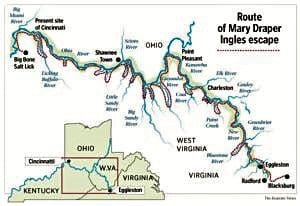
At that time, Mary had been gone from home about five months, and traveled 800 miles on foot, struggling along the riverbanks and the rocky New River gorge, living off the land as best she could for more than 40 days before reaching safety.
AFTERMATH
After Mary’s return from captivity, the Ingles made their home at Drapers Meadow in their old location for some time.
But in the aftermath of the massacre, Draper’s Meadow was abandoned – as was much of the frontier for the duration of the French and Indian War.
So in 1762, they exchanged their right to William Preston, and William Ingles established a tavern and ferry there on the New River near present-day Radford city.
He and Mary continued to raise their family at the location now known as Ingles Ferry; they had four more children after losing their eldest two sons to the Shawnee.
The couple tried to buy their captive sons back for many years, but George, the younger boy, had died shortly after he was taken from his mother.
Their eldest boy, Thomas, lived with the Shawnee and was ransomed back in 1768 for $150. Returning at age 17, after so many years with the Shawnee, Thomas never really adjusted to the “white way of life.”
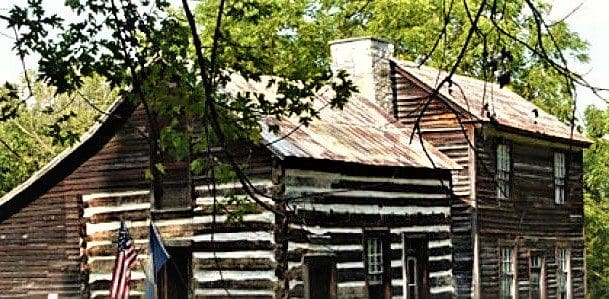
The Ingles remained at Ingles Ferry until 1773 when they sold their land to William Preston and moved to Ingles Bottom in Pulaski County.
William died at Ingles Bottom in 1782. Mary lived to be at least 83 years old, and died in 1815.
THE LEGEND

The events of the Drapers Meadows attack and of Mary’s ordeal have become legendary, establishing her as Virginia’s premier Colonial heroine.
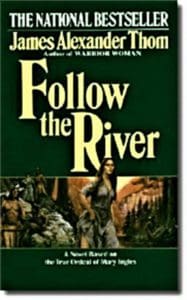 “Follow the River,” James Alexander Thom’s historical novel based on Ingles’ story, has sold more than a million copies.
“Follow the River,” James Alexander Thom’s historical novel based on Ingles’ story, has sold more than a million copies.
An outdoor historical drama based on her experience ran in Virginia from 1971 until it closed just ten years ago.
A couple of television movies about Mary’s captivity and escape have also been produced.
Smithfield
After the war, William Preston used the land purchased from the Ingles to create his Smithfield Plantation and prosperous land business.
In 1774 William Preston moved his family and changed the name from Draper’s Meadow to Smithfield in honor of his wife, who was a Miss Susanna Smith.
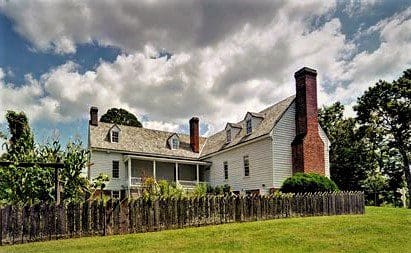
The homesite of Smithfield is not located on the exact site of Draper’s Meadows settlement – it stands about one half mile to the Southwest.
When the house was first built, it was surrounded by a stockade for protection from Indians.
A year or two earlier, in 1772, another purchaser, Samuel Black, had acquired 600 acres of land in the Draper’s Meadow area for his two sons, John and William.
Blacksburg
When Samuel Black died in 1792, the land was divided into two sections – John Black’s property (which today is the central campus of Virginia Tech), and William Black’s portion, on which he constructed the square grid of streets now known as “The Old Sixteen Squares” in Blacksburg.
On January 13, 1798, the Virginia Assembly, on the solicitation of William Black, established the town of Blacksburg on his property.
On the same date, William Black and his wife, Jane, also deeded the area on which the town stood (38 3/4 acres, plus 20 poles), to a group of trustees representing the town of Blacksburg.
Almost a century later, in 1871, the village of Blacksburg was incorporated.
The new Virginia Agricultural and Mechanical College, now Virginia Polytechnic Institute and State University, was founded in 1872.
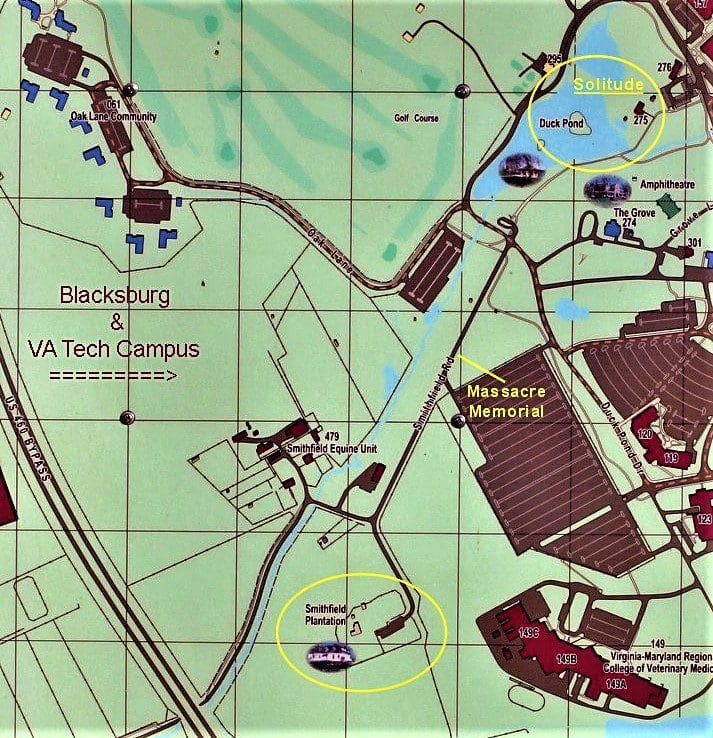
The Ingles-Draper house likely stood somewhere in the vicinity of the Duck Pond and Solitude on what is now the VPI & SU campus.
And as near as anyone can tell, the heart of the Draper’s Meadows settlement was just about here, between the Virginia Tech Drill field and the Grove, home of the college president.
Today, the Virginia Tech Duck Pond is a peaceful place, especially in spring, when students stroll across the bridges or sprawl on the grass to study in the sun.
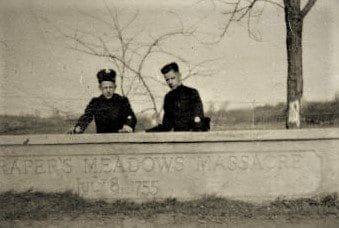
But a half-buried stone marker near the duck pond recalls a day that was anything but peaceful:
“The Drapers Meadow Massacre,” it reads. “July 8, 1755.”
Take a trip to Virginia Tech while you’re in the area, and take a look for yourself at the historical markers of Draper’s Meadows and the massacre.
Things To Do at Beliveau Farm
To help ease your way back into modern times, here’s an article about Britain’s plan to Win the French and Indian War with Beer 🙂
That said, back in the world of today, there are plenty of things to do on the Beliveau Farm and Winery besides drinking wine or beer!
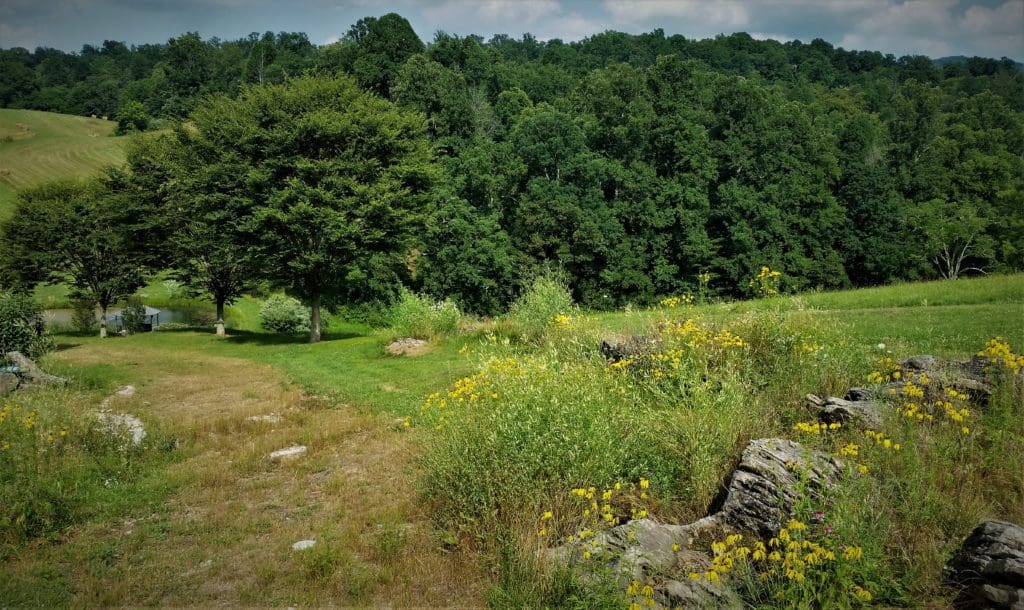
You can explore the property’s on-site hiking trails, fragrant lavender garden, covered veranda, stocked ponds, hilltop pavilion, Italian tiled reception hall, outdoor patio and tiki bar, and on-site French Country-style Bed & Breakfast.
… and if you’re still bored, you could get married 😉
It’s true! In fact, Beliveau Farm has been named a top Southwest Virginia wedding venue by Virginia Living Magazine.
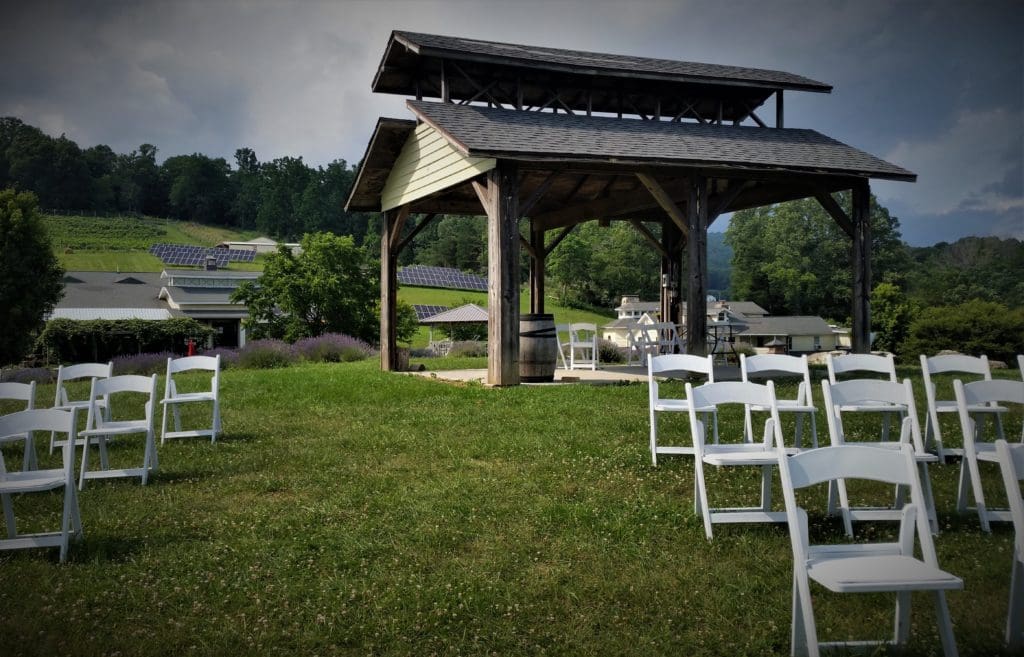
Seriously, it’s a beautiful place for a wedding or even just a romantic weekend getaway.
I’m not the only one who thinks so, either, since in February 2020, Beliveau Winery was also named a “Top 10 Most Romantic Winery in Virginia” by the Virginia Wine Pass.
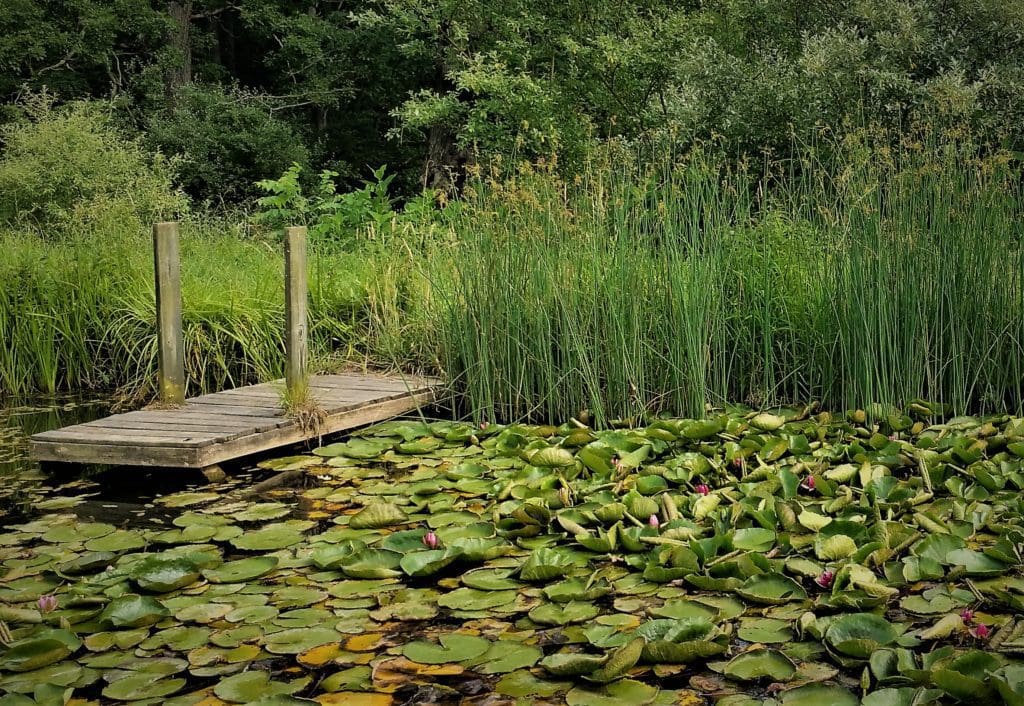
You can find more info about the bed and breakfast here.
Visit Info
If you want to leave the Beliveau Estate for other activities, (like hiking!), they have recommended some nearby options on the Area Activities page.
You could also check out the Appalachian trail, and the Triple Crown hikes, and try one – or all – of them while you’re in the area.

Location, Direction and Hours
Location:
3899 Eakin Farm Rd, Blacksburg, VA 24060
Directions:
NOTE: For GPS, you may need to use 5415 Gallion Ridge Rd, Blacksburg, VA 24060 as Eakin Farm Rd (our driveway) does not always show up correctly.
**Uber/Lyft is not advised for getting to the Farm unless a ride home is prearranged with your driver. They’ll bring you out, but it’s very difficult to get a ride home due to the service area.**
Hours of Operation:
Winery/brewery is open Wednesday -Sunday, 12-6pm (Fridays until 8pm).
Call 540-961-0505 to reserve. Reservations are encouraged but not required.
The Winery/Brewery is closed Mondays, Tuesdays, Thanksgiving, Christmas, and New Years Day.
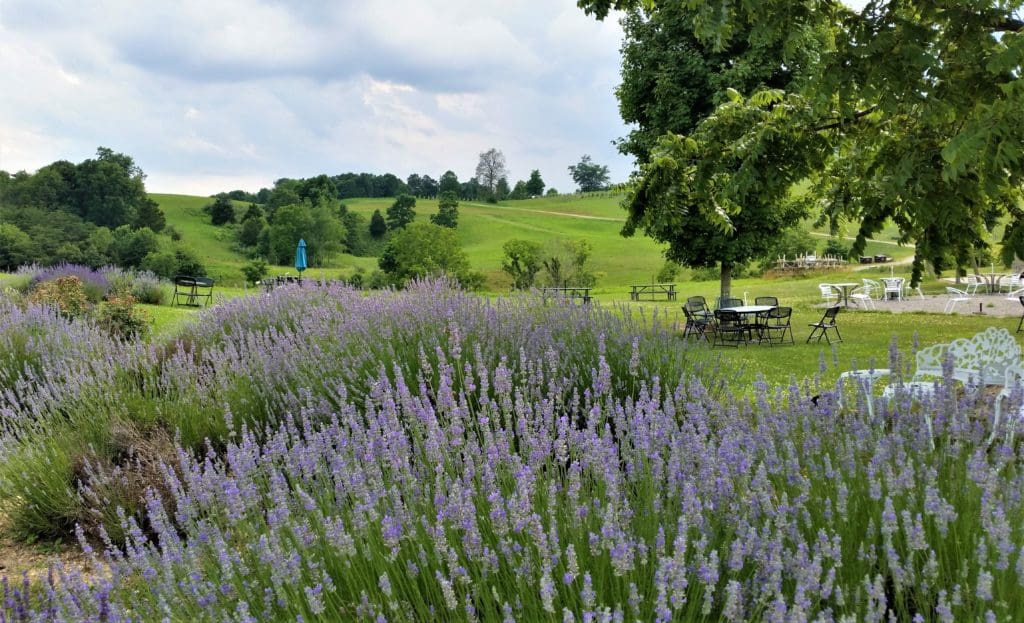
Have a great trip to Beliveau Farm and Winery! If you have any questions or comments, drop me a note and I’ll get back to you as quickly as I can.
For more posts about my visits to State Parks and National Parks, go to the Hiking Destinations page.
Thanks for stopping by – see you next time! LJ
To Get New Idratherwalk Posts
sent directly to your inbox (how convenient!) Click this Button
If you enjoyed this post, please share it:

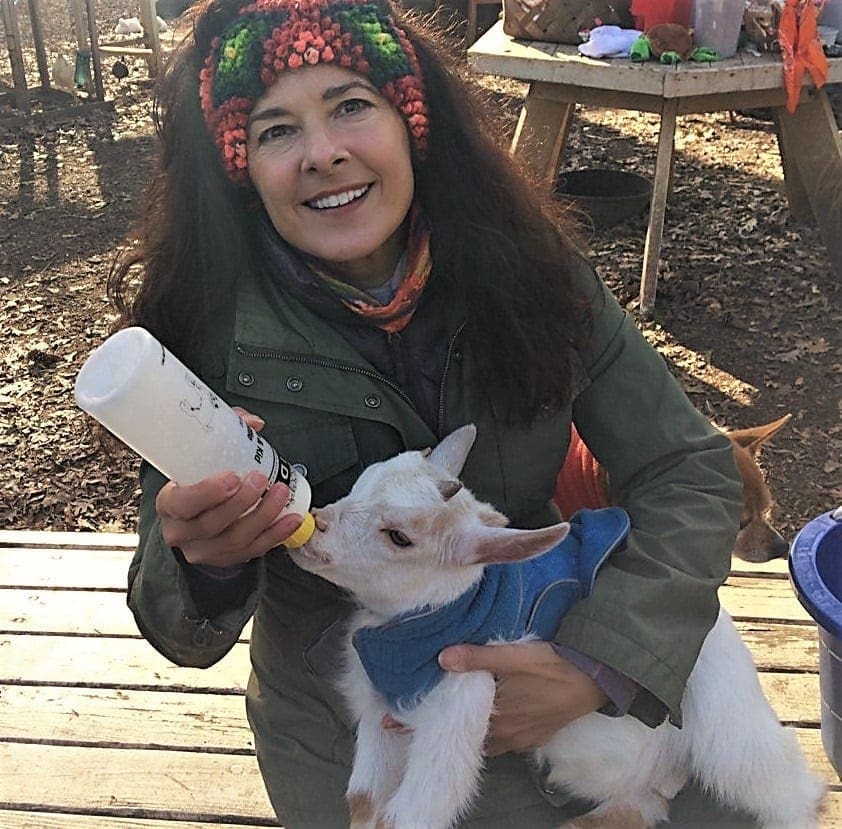
LJ has spent much of her free time as a single Mom – and now as an empty-nester – hiking in the US and around the world. She shares lessons learned from adventures both local and in exotic locations, and tips on how to be active with asthma, plus travel, gear, and hike planning advice for parents hiking with kids and beginners of all ages. Read more on the About page.
